10 Vegetables to Grow for a Grill Master’s Garden
Your guide to vegetables perfect for the grill
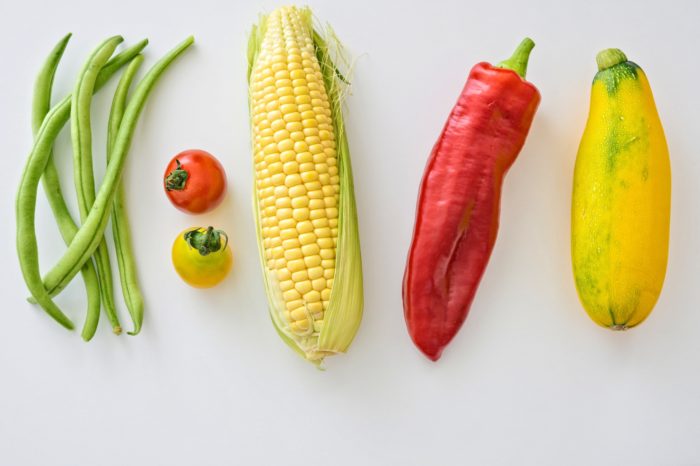
A few years ago, despite a small yard (maybe 250 square feet) and little free time, I decided to grow my own food. When the weather warmed, I set about digging in seeds and transplants, and anxiously awaited my first harvest. I wasn’t expecting much. Still, I cleared a bed in the corner of the yard and planted tomatoes, arugula, spinach, summer squash, beets, and corn. Along with my neighbors in the suburban area I lived in, I was pretty suspicious of the corn when it began to grow. Could it be that easy? I followed the directions on the packet for watering, and I hand-fertilized the corn silks as instructed by a more experienced friend. When the corn began to tower over the fence and the ears filled out, I was ecstatic. I decided to grill my corn, and after applying a healthy smattering of butter, I held my breath and took a bite.
I was shocked. Not only was the corn edible, but it was the best-tasting corn I had ever eaten. I could not believe that I had been able to grow something so delicious from my own wayward garden plot, situated imperfectly as it was on the corner of two busy roads. That’s all it took. I was hooked on growing my own produce.
Of course, half the fun of growing your own food is finding delicious ways to eat it. Since I love grilling as well as gardening, it seemed only natural to put together a guide that incorporates both. I still identify myself as a beginner gardener, and there’s always more to learn, so this list is by no means comprehensive. However, below you’ll find tips for growing a number of delicious vegetables, as well as varieties Fine Gardening recommends, including suggestions for the yard-challenged and links to videos or articles for more information. All of these vegetables should or could be cooked on the grill.
Enjoy!
Asparagus, Carrots, Radishes, Squash, Eggplant, Tomatoes, Onions, Corn, Artichokes, Potatoes
Asparagus
Varieties
‘Mary Washington’, ‘Jersey Giant’, and ‘Jersey Supreme’ are well-loved varieties. Choose ‘Purple Passion’ if you want an asparagus variety that says, “I’ve planted asparagus, and now I’m ready to have some fun.”
How to grow
Asparagus is a perennial that is typically grown from crowns but can be grown from seed. Either way, growing asparagus requires an investment of time, but one that will yield results for years to come as long as you take care of your patch.
Plant crowns so that the top points are covered by only a few centimeters of soil, and space the crowns about 1 to 3 feet apart.
Read more about growing asparagus.
OK for containers?
Yes, but larger pots (1 to 3 feet in diameter) yield better results.
When to plant
Plant in late winter up to midspring. Planting before the last frost is fine as long as the ground is somewhat workable and crowns can be placed at least 2 inches deep.
When to harvest
Asparagus takes at least a year to establish from crowns. In the second year, spears can be harvested sparingly. By year 3, you can harvest for three weeks. Asparagus from seed will take longer to mature.
Carrots
These root vegetables, rich in vitamin A, aren’t necessarily thought of as must-haves for the grill, but carrots make a scrumptious grilled item for midsummer.
Varieties
‘Scarlet Nantes’, ‘Danvers’, and ‘Purple Haze’. For more info, check out Carrots to Covet.
How to grow
Carrots can’t be transplanted, so they need to be sown directly where they will grow. See video on planting carrots.
OK for containers?
Yes, but select a short-speared variety like ‘Short Stuff’ that doesn’t need as much depth to develop.
When to plant
Direct-sow as soon as the soil can be worked in the spring through midsummer.
When to harvest
You can consider harvesting your carrots 50 to 80 days after sowing. You will be able to tell it’s time to harvest because the carrot tops will show and will be ½ to ¾ inches across.
Radishes
Radishes are members of a wide-ranging family that includes mustards and cabbages. This is the group of vegetables under scrutiny for their role in cancer prevention. Like broccoli and cabbage, radishes are rich in phytochemicals that are thought to enhance the immune system and boost production of enzymes that help excrete carcinogens. Read more about growing radishes.
Varieties
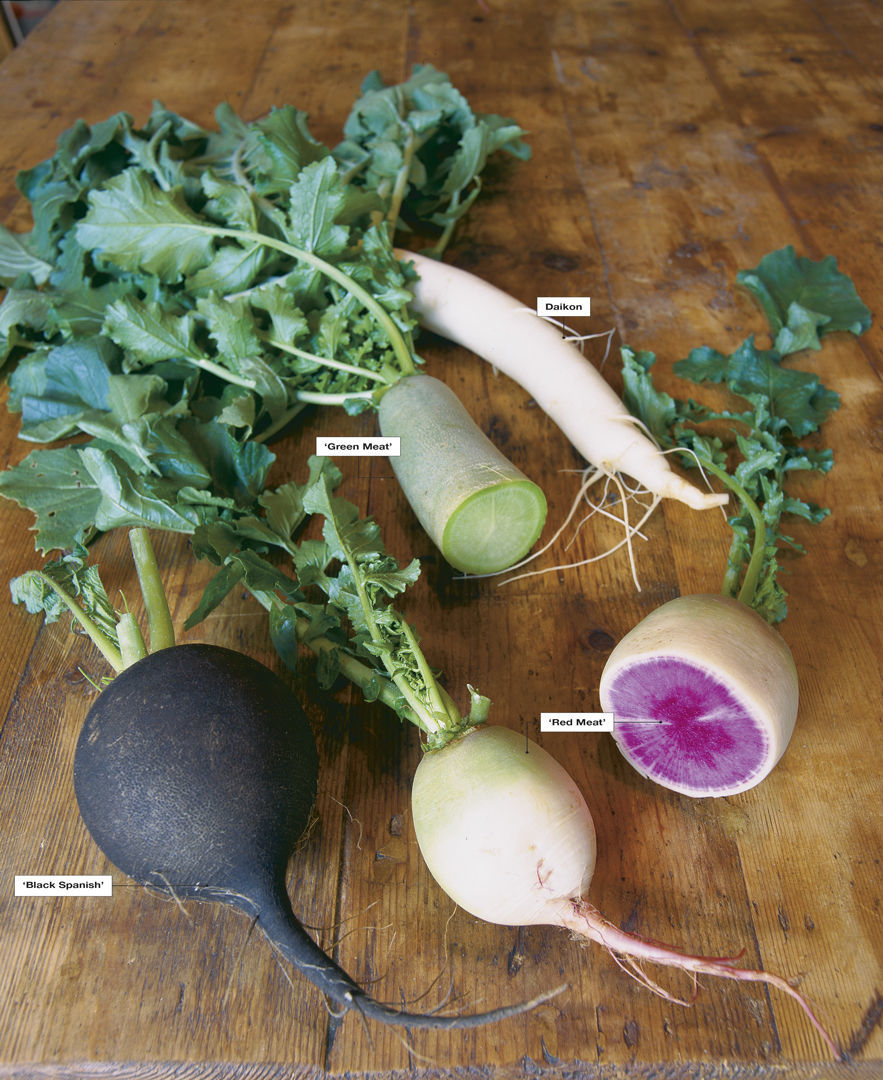
Spring varieties: ‘Sora’, ‘Easter Egg’, ‘Champion’, and ‘Marabelle’
Winter varieties: Daikon, ‘Red Meat’, ‘Black Spanish’, and ‘Green Meat’
How to grow
There are spring and winter radishes. Spring radishes can be grown in spring or fall and are ready in 3 to 4 weeks. Plant as soon as the ground is workable, as many varieties enjoy cooler temperatures. Pick radishes as soon as they’re ready, because they’re liable to split if left too long. Plant ½ inch deep and about 1 to 2 inches apart (or closer, then thin to 2 inches).
Winter radishes are best grown in late summer or fall and take 6 to 8 weeks to grow. They tend to be starchier and larger than their spring cousins.
Radishes like water, so keep soil evenly moist while growing.
OK for containers?
Yes, with proper spacing.
When to plant
Plant radishes in late winter or early spring. As soon as the soil is workable, you can sow the seeds. Winter radishes should be sown in late summer or fall. Check your seed packet for more information on timing. Read more about caring for radishes.
When to harvest
Harvest spring radishes 30 to 45 days after sowing. Winter radishes take 6 to 8 weeks. You’ll know they are ready to pluck because their greens will be well formed and their tops may even be poking out of the ground.
Squash
Varieties
Squash include summer and winter varieties. Zucchini and yellow crookneck are examples of summer varieties, while acorn and butternut are winter types.
Summer varieties: As seen in the photo (clockwise from top): ‘Eight Ball’ zucchini, ‘Lebanese White Bush’, ‘Sundance’, ‘Condor’ zucchini, and yellow pattypan ‘Sunburst’
Winter varieties: ‘Carnival’ (a great acorn variety) and ‘Delicata’
How to grow
Sow in mounds at least ½ to ¾ inch deep. Space plants far apart, at least 2 to 3 feet. Squash is a water-loving plant, so place nursery containers in the ground near the seedlings to help slowly water the roots. See how to do it in this video: How to Plant Squash.
OK for containers?
Squash need space, but bush varieties can work in large pots. Just make sure you keep the plants watered well, as containers tend to dry out faster than the ground.
When to plant
Squash likes warm soil, 65°F to 70°F minimum.
When to harvest
75 to 100 days, depending on the variety
Eggplant
Varieties
‘Clara’, ‘Meatball’, ‘Listada de Gandia’, ‘Louisiana Long Green’, ‘Lebanese’, ‘Rosa Bianca’
How to grow
You can start eggplants indoors, but they like it hot, so you will need to find some way to keep them warm. A heat mat is ideal for placing under the seedling flat. Give them at least 10 weeks before your last frost to grow inside so that they can establish themselves before you transplant them outside. Watch a video on growing eggplant.
OK for containers?
Smaller varieties such as ‘Lebanese’ do OK in pots. Most will grow better in the ground.
When to plant
Plant seedlings in a full-sun location—the more sun, the better. Space plants 1½ feet apart, and make sure there is at least 2 feet between rows. Provide frost protection for the plants in spring and fall. Mulch around the plants to suppress weeds and to retain moisture. See more about caring for eggplants.
When to harvest
Once an eggplant fruit’s skin is bright and shiny, harvest it, even if it is small. Fruit whose skin has gone dull has gone to seed, and the taste will be bitter. Seed packets tell you how long until your variety reaches maturity, but it’s usually about 90 to 120 days from transplant.
Tomatoes
Varieties
‘Sungold’, ‘Rose’, ‘Brandywine’, ‘San Marazano’, ‘Pineapple’
How to grow
Start indoors, then transplant when danger of last frost has passed. Watch a video about growing tomatoes.
OK for containers?
Determinant varieties such as ‘Amelia’ that stay generally under 5 feet tall are good for containers.
When to plant
Start indoors 4 to 6 weeks before last frost. Transplant when nighttime temperatures are above 60°F, after hardening off. Hardening off is the process of taking your tomato seedlings outside during sunlight hours so that they can get used to the sun slowly. If you bring them outside without hardening off, they may burn.
When to harvest
To tell when it’s time to harvest tomatoes, you give them the squeeze-and-smell test. Gently squeeze the tomato, and if it is a little soft and smells strongly of tomato, then it’s a good time to pick it. Seed packets tell you the time to maturity, which is usually 60 to 120 days depending on the type of tomato.
Onions
Varieties
‘Alsa Craig’, ‘Red Barren’, ‘First Edition’. Day length helps with choosing a variety. Long-day onions are best for northern locales, short-day for southern areas.
How to grow
You can start onions from seed, but it’s a long time to maturity, so many people get them as “onion sets,” which look like little bulbs. Garden centers and seed catalogs sell them this way. These are sown directly into the ground. Onions like cooler temperatures, so they can be sown earlier in the season. Seedlings need to be snipped back to 6 inches. If you want to grow onions from seed, find out how to do so here and here.
OK for containers?
Yes, but smaller plants, like scallions, do better in containers.
When to plant
If the ground is workable, you can put them out.
When to harvest
You’ll be able to see that the bulb is starting to form, and you should be able to tell that it is a mature size. The foliage will begin to yellow as well. Onions need to be cured, which means placing them in a cool, dry spot before storing.
Corn
Varieties
‘Butter and Sugar’, ‘Silver Queen’, ‘Candy Corn’, ‘Sweetie’
How to grow
Direct-sow 2 feet apart when the soil is workable. When the plants reach 18 inches, side-dress them with a high-nitrogen fertilizer.
OK for containers?
Not really.
When to plant
When the soil is workable.
When to harvest
Harvest when the ears of corn start to lean away from the plant and the silks get brown and crispy. Watch this video to learn when corn is ready to be picked.
Artichokes
Varieties
‘Violetto’, ‘Green Globe’, ‘Imperial Star’
How to grow
Start plants from seed, or use a division from a mature plant. Artichokes need to be kept well watered, as they are thirsty plants. Learn all about growing artichokes.
OK for containers?
Not really.
When to plant
Start seed in late winter inside, then transplant 8 to 10 weeks later after the danger of frost has passed.
When to harvest
When buds are large, firm, and tightly closed, slice through the stem just below the bud. Though artichoke flowers are pretty, when they bloom it is too late to harvest the fruit.
Potatoes
Varieties
‘Katahdan’, ‘Red Norland’, ‘All Blue’
How to grow
Start from seed potatoes, which are small potatoes, and make sure there is an eye on each one. Learn all about growing potatoes.
OK for containers?
Yes, but choose a larger, deeper container (think garbage can). Find out more about growing potatoes in a can.
When to plant
Soil temperature needs to be above 55°F to 60°F to prevent rot.
When to harvest
When plants significantly die back in late summer, sift through the soil and see if the spuds are the right size.



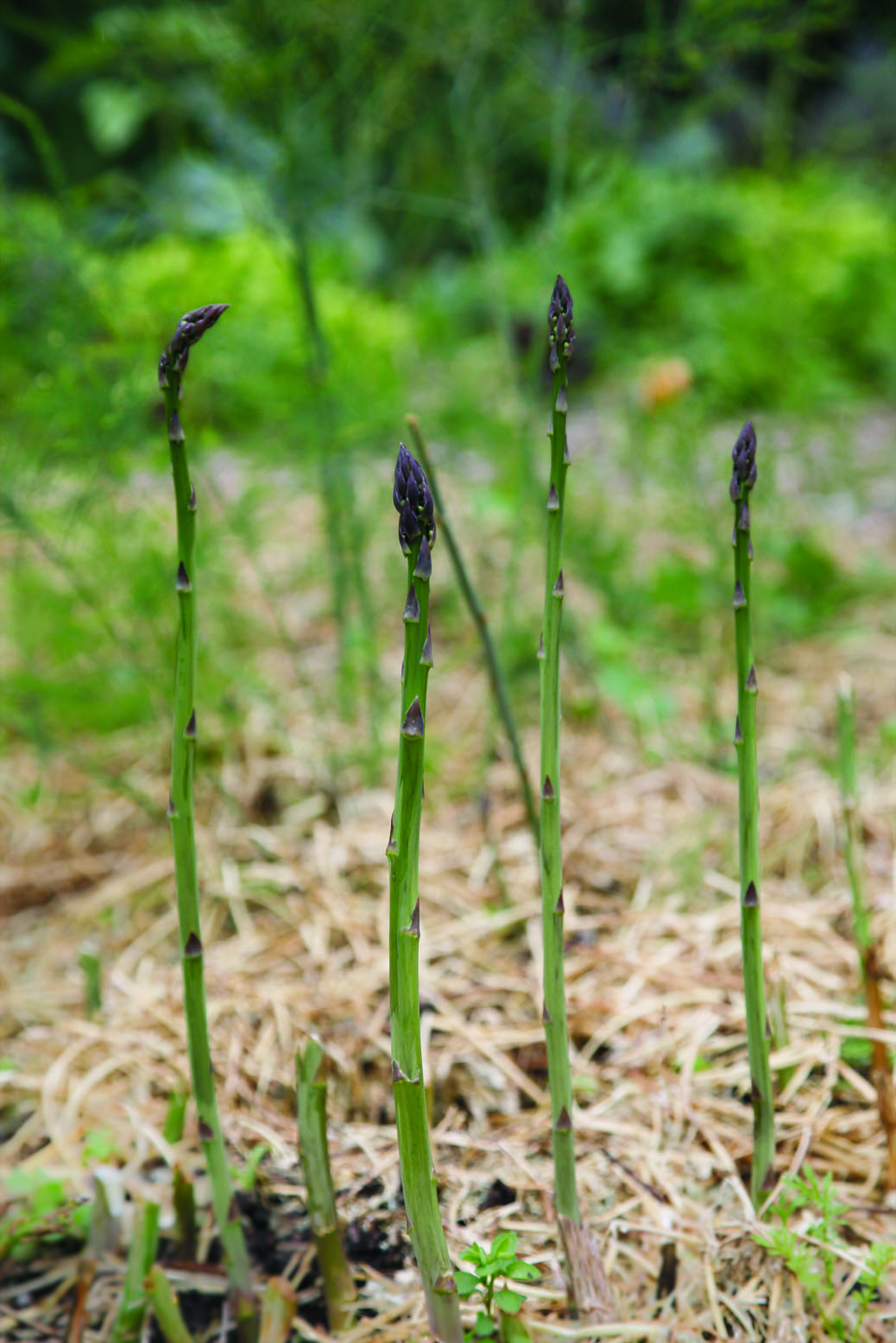
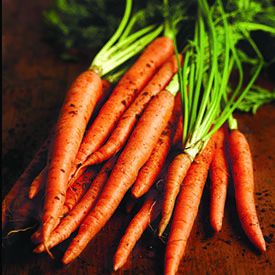
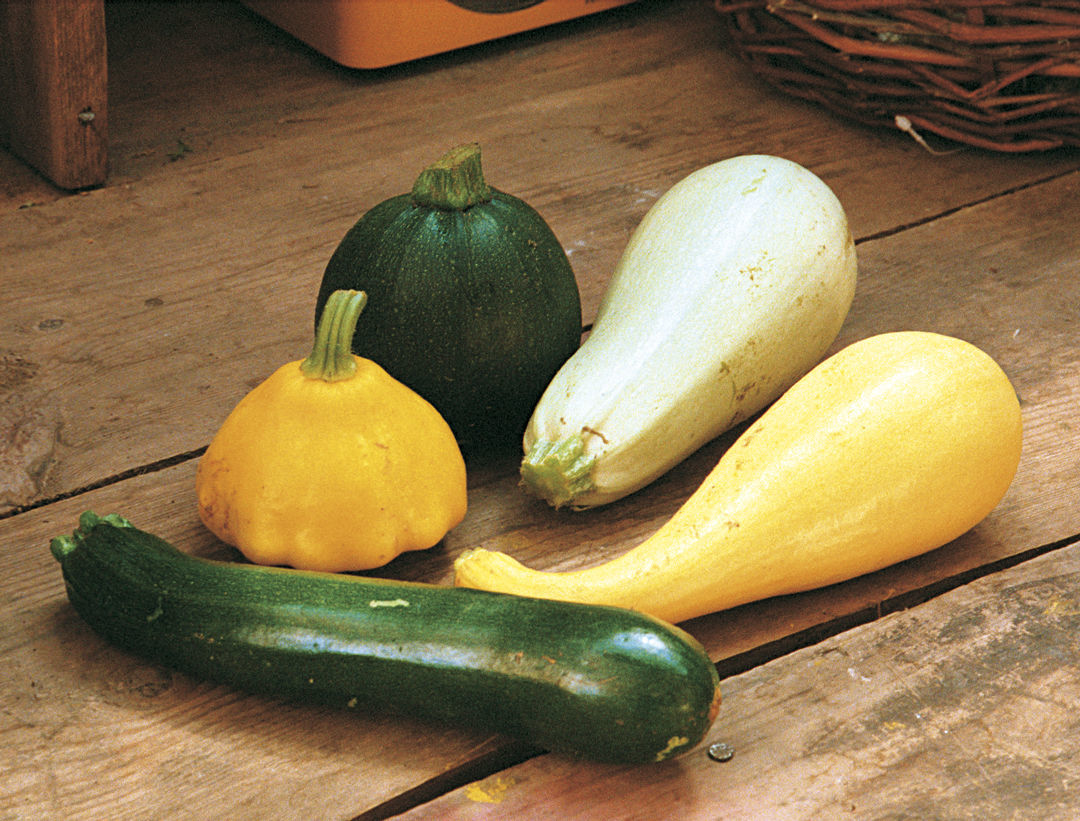
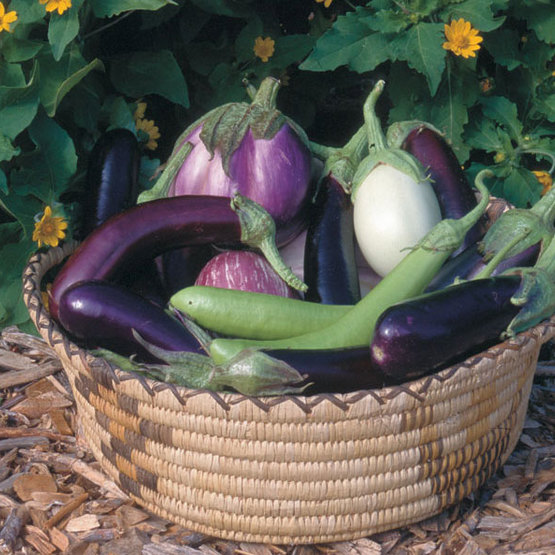
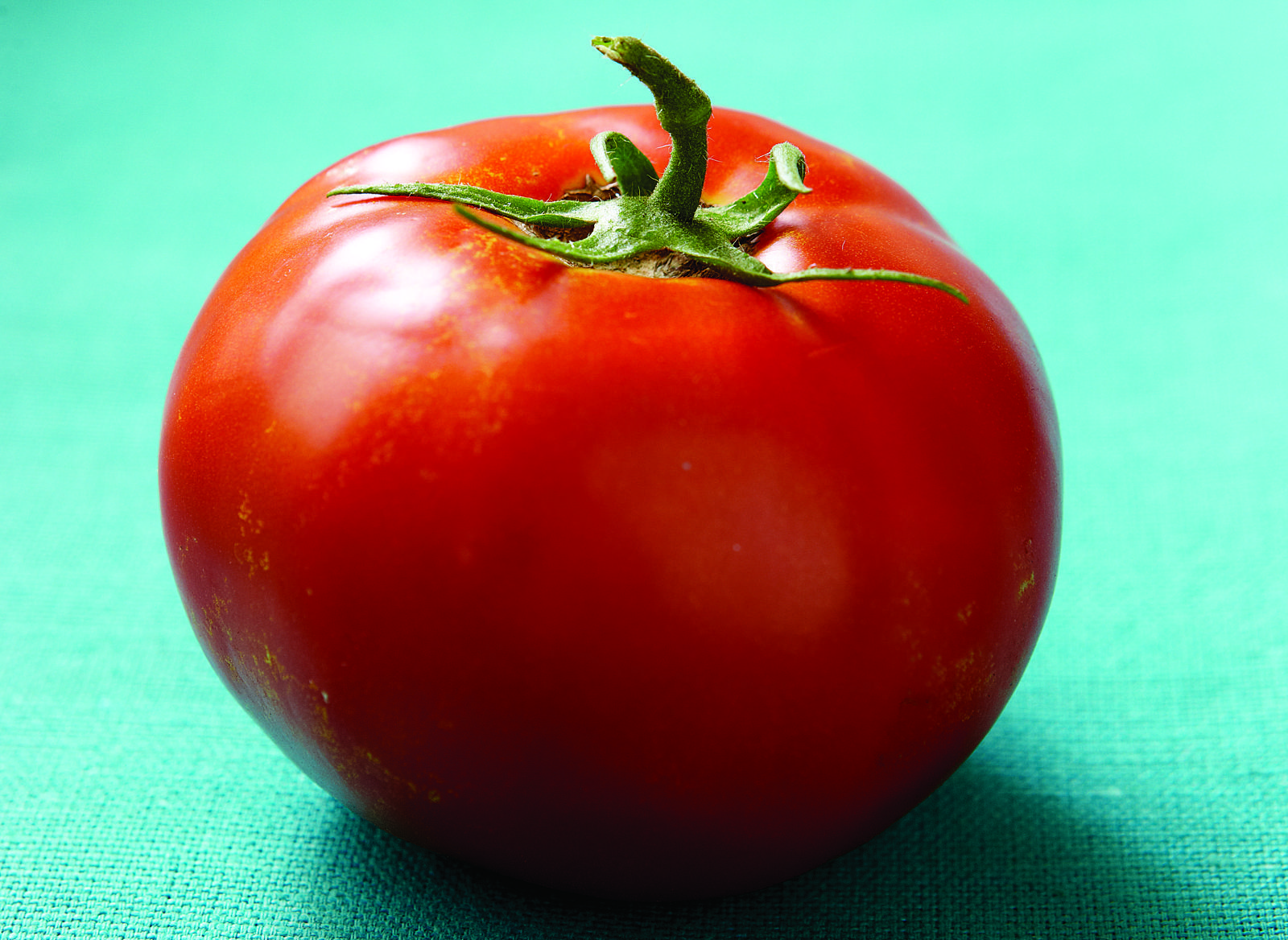
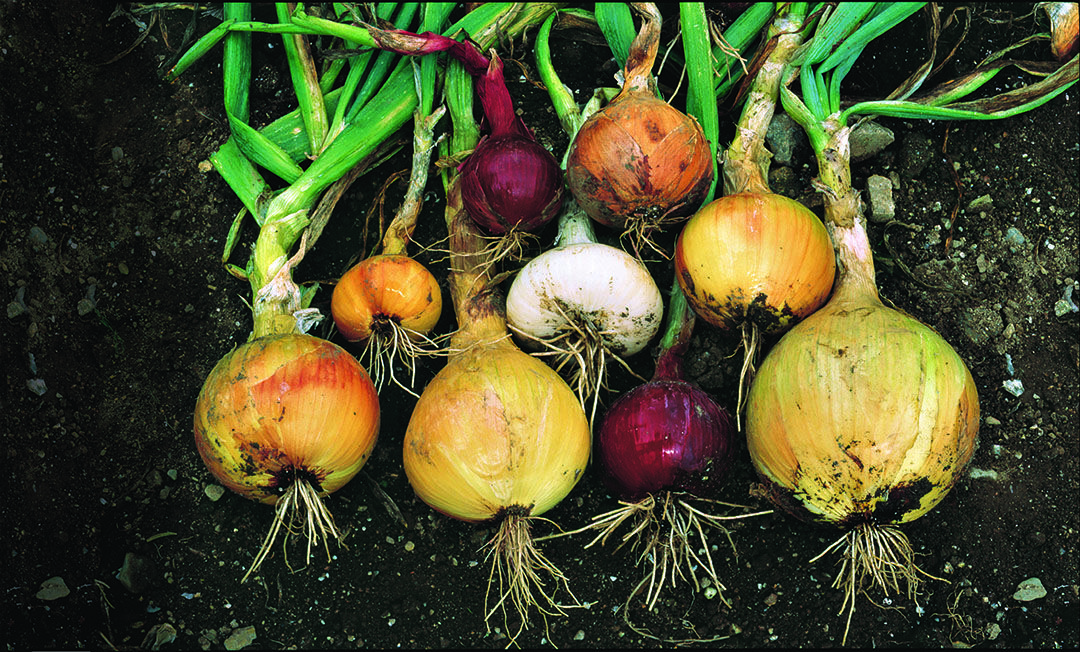

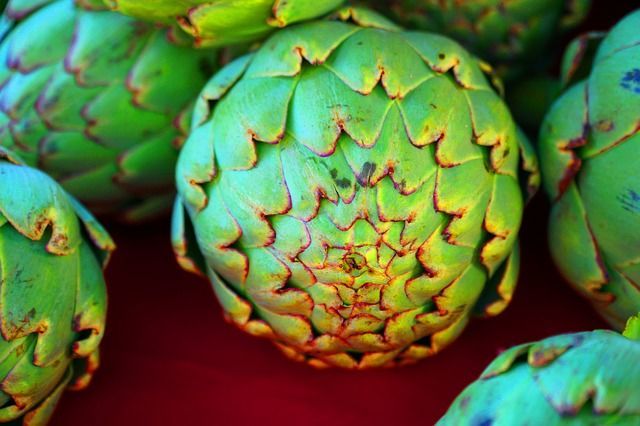
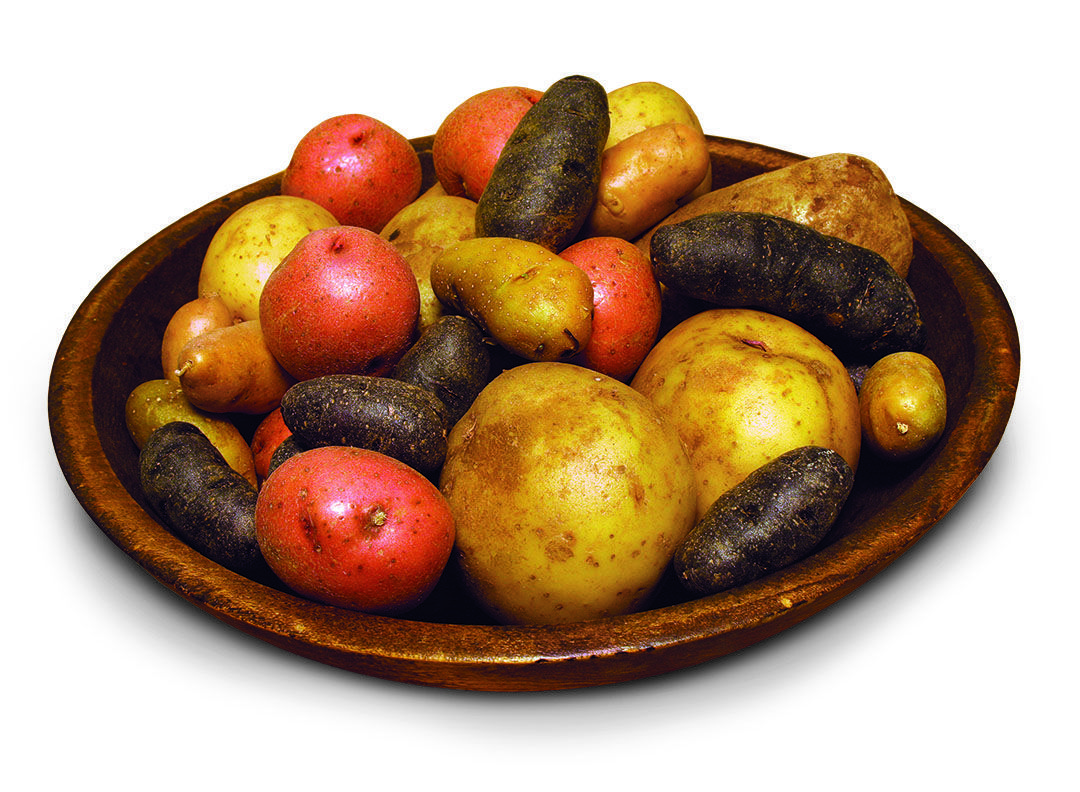



Comments
It is not easy to grow turf and plants, and what is even worse is all the work that comes before doing it. Hire the best soil and Ph testing service, and let the experts from Green Scene Landscaping handle what they know best. Contact us to know more!
Log in or create an account to post a comment.
Sign up Log in